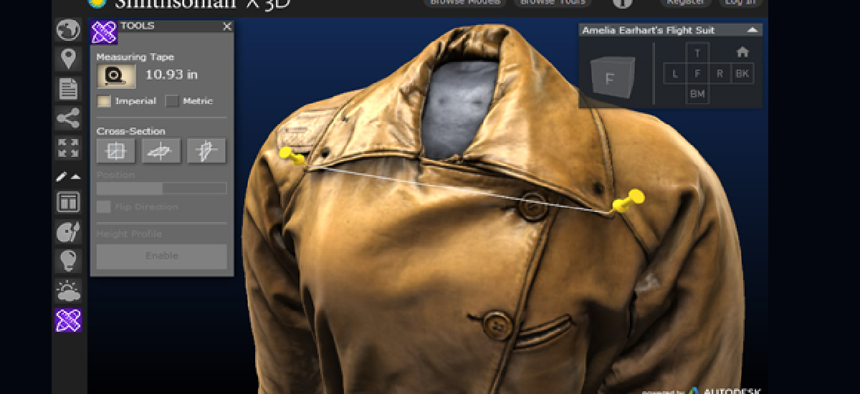Smithsonian builds Internet of connected exhibits, specimens, research apps

The Smithsonian Institution is undergoing a digital makeover to support more interactive exhibits, displays and research applications for the public and research communities.
The Smithsonian Institution is undergoing a massive digital transformation to make the 137 million objects, artworks and specimens in its collection more accessible to museum visitors and researchers around the world.
The federally managed research and education institution has 400 terabytes of data related to its exhibits to share with the world and is using a broad range of technologies – including big data analytics and the evolving Internet of Things – to change how the organization interacts with its users, according to Deron Burba, the Smithsonian’s CIO.
As part of its data makeover, in November 2013 the Smithsonian launched a website, 3d.si.edu, that creates 3-D models of about 10 percent of the Institution’s collection of objects. Researchers and students can now use 3-D technology to interact with digital images in a way that otherwise could only be done in person. Visitors to the site can view all sides of a woolly mammoth model or the gun boat Philadelphia used in the American Revolutionary War, rendered with audio guided tours.
The research institution is also exploring the use of location services, mobile apps and websites to improve visitor experiences and ensure that visitors and researchers find the information they need quickly and easily, Burba said during a Jan. 8 webinar on the Internet of Everything hosted by Cisco.
To support those efforts, the Smithsonian has installed Wi-Fi throughout its 19 museums. The network both enhances the experience of visitors and provides insight into where they are spending their time and what exhibits they are visiting. “We are engaging the world in collecting research data,” Burba said.
The massive amounts of data involved in these research and administrative applications puts demands on the Smithsonian’s network and IT infrastructure. To bolster those systems, the institution has deployed the Cisco Optical Networking System Multiservice Transport Platform as the foundation for sharing its digital archive.
An Enterprise Digital Asset Management System brings all of this information together through a Web services platform connecting 30 databases and enhancing search capabilities. The organization has also upgraded connections to the Internet2 research network to ensure its researchers have the bandwidth to collaborate with scientists at the Oak Ridge National Lab and other research facilities.
Applications like those under way at the Smithsonian are driving other government network and infrastructure upgrades necessary to support Internet of Things-type projects, according to Cisco.
The City of Barcelona, Spain, for example, implemented a converged Wi-Fi network to connect sensors that help in the monitoring of the city’s water management, smart parking, waste management and connected buses. Meanwhile, the City of Midland, Texas, has deployed an Advanced Transportation Management System to monitor traffic flow throughout the city.
The connection of people, process, data, and things involved in these networks is opening up both risks and opportunities for the public sector, according to Cisco. An analysis by the company claims that the Internet of Everything could generate $4.6 trillion in value for public-sector organizations over the next decade.





